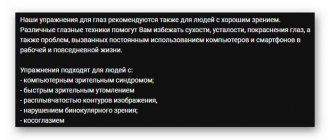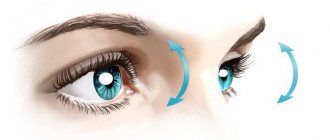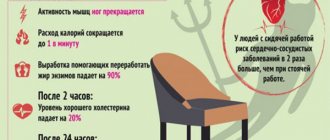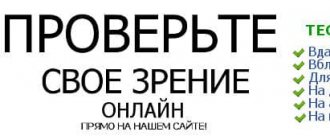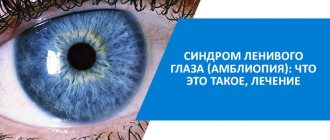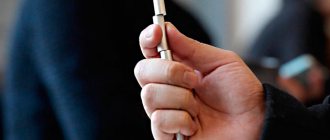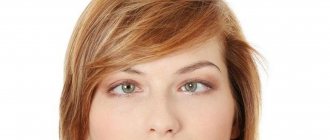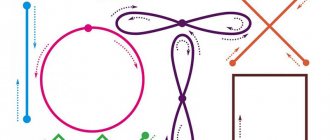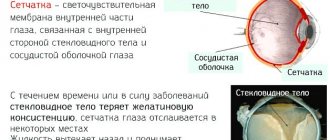With the rapid development of science and technology, the number of people with ophthalmological diseases has increased fourfold. Every third person has some form of visual impairment. Decreased visual acuity significantly affects the quality of life. Treatment of such diseases must be comprehensive. Doctors often recommend that patients do eye exercises. One of the most popular and effective techniques is eye gymnastics according to Avetisov.
Authority of opinion
Eduard Avetisov was a world-famous scientist. It was he who largely determined the development of the fundamentals of ophthalmology. This man was the chairman of the All-Russian Scientific Society of Ophthalmologists and the Problem Commission on Ophthalmology of the Ministry of Health of the Russian Federation, as well as the main scientific department of the Helmholtz Institute.
Eduard Sergeevich mainly studied binocular vision, optical nystagmus, myopia and low vision, oculomotor disorders, eye refraction, optometry, low-energy lasers and ways to help children with ophthalmological diseases.
It is not surprising that Avetisov was able to develop effective and safe eye gymnastics that could solve the problems of patients even decades after the end of his career.
Avetisov emphasized that ophthalmic disease is easier to prevent. It is difficult to treat such pathologies, and in most cases they have a chronic basis.
Principles of gymnastics according to Avetisov
The professor was convinced that the prevention of eye diseases should be addressed from childhood. If you strictly follow the doctors' recommendations, you will never suffer from visual impairment.
Avetisov's gymnastics is a set of simple exercises that help strengthen the optical system and train accommodation (focal adaptation due to contractions of the ciliary muscle).
Advantages of gymnastics according to Avetisov:
- The exercises were developed by a professional in the field of ophthalmology. Professor Avetisov developed a scheme that is still one of the best.
- The scheme includes simple and easy exercises that do not require training or special equipment.
- Gymnastics takes only 15 minutes a day.
- You can do the exercises at home, at work, or while traveling.
- When performed regularly, gymnastics quickly produces results.
- Many patients also noted increased concentration and attention.
You need to do gymnastics daily. The exercises will be especially useful if you work a lot on the computer, read books and watch TV. Gymnastics also helps patients with nearsightedness (myopia).
The first results are observed within a few days. That's what the professor said, and that's what the patients say. Gymnastics according to Avetisov includes three sets of exercises for the eyeball, which have different effects on individual muscle groups. These exercises help ensure visual acuity and prevent ophthalmic diseases.
At first, it is recommended to do the exercises slowly, gradually accelerating and increasing the load. You can start with 4-5 movements, increasing their number to 8-12 in one approach.
Who is Avetisov
Eduard Sergeevich Avetisov was an experienced professor in the field of ophthalmology, his name is known throughout the world. He studied eye diseases, as well as the prevention and treatment of these diseases. He made a very great contribution to the development of domestic medicine in the field of ophthalmology, was devoted to science, had excellent performance indicators and spent a lot of energy on research.
Eduard Sergeevich Avetisov
Avetisov Eduard Sergeevich was born in Samarkand, graduated from medical institute there and began working at the department of treatment of eye diseases. For a long time he worked at the Research Institute of Eye Diseases named after. Helmholtz - here his experience was more than 40 years, and for 35 years Eduard Sergeevich personally supervised all scientific work of the university and carried out a lot of research. At the same time, he managed to manage the department of children's vision protection and laboratories. Eduard Avetisov was engaged in all kinds of research in the field of vision, studied the problems of myopia and hyperopia, optical nystagmus, etc. By developing these areas, it was possible to obtain a classification of amblyopia, develop the latest and most relevant treatment methods, including gymnastics, which helped improve the vision of thousands of people .
Avetisov, together with his employees, was engaged in a very serious and important matter - protecting the vision of children and adolescents
Correction of low vision is the main problem that Avetisov dealt with. He, in collaboration with his colleagues, was able to develop a new system for restoring and improving vision functions with nystagmus, and put forward a theory of the pathogenesis of myopia, which was eventually confirmed by other scientists.
It was thanks to Eduard Avetisov that the Ministry of Health approved a new medical position - pediatric ophthalmologist. This professor was able to develop special eye gymnastics that helps develop and actively train small eye muscles and maintain the health of the visual organs. Now this gymnastics is wildly popular.
Zinaida, 48 years old: “I started having problems with my eyes at the age of 40. Visual acuity fell very quickly. I started wearing glasses. And I even tuned in for laser correction. On the advice of an ophthalmologist, I tried to perform gymnastics according to Avetisov. Of course, after several sessions I didn’t notice any effect at first. But she continued her training. And so, I began to notice that my vision had improved a little, and my eyes began to not get so tired when working with the computer. So there really is an effect from gymnastics!”
Features of the exercises
During the exercises, the person should be comfortable, so you can be in an upright sitting or standing position. On average, gymnastics takes 15 minutes. If discomfort occurs, you should stop.
How to influence your vision:
- Improve blood supply to the eye. You need to blink slowly and quickly, massage your eyes through the drooping moving eyelid.
- Strengthening the eye muscles. You need to make slow and smooth movements with your gaze.
- Improve image clarity. You need to focus your gaze on distant and close objects.
First set of exercises
This group of exercises helps improve microcirculation of fluid inside the eye and stabilize blood flow. The exercises must be performed in the specified sequence. If you experience discomfort or pain, you should consult an ophthalmologist.
First scheme:
- Squeeze and unclench your eyelids, holding each position for 3-5 seconds. 6-8 approaches are required.
- Blink quickly for 25 seconds, rest for a couple of seconds and repeat blinking.
- Massage your closed eyelids with the pads of your index fingers for a minute.
- Lightly press the eyeballs through the eyelid for 3 seconds. After rest, repeat the exercise 3-4 times.
- Using the pads of your index fingers, press on the skin of the brow ridge, providing resistance to the muscles of the forehead and movable eyelid. It is recommended to repeat the exercise 6-8 times.
Gymnastics for the eyes according to the methods of E. S. Avetisov, V. F. Bazarny, G. A. Shichko article
Gymnastics for the eyes according to methods
E. S. Avetisova, V. F. Bazarny, G. A. Shichko.
Every year the number of children with various eye diseases and visual impairments increases: myopia, farsightedness, impaired refractive power of the eye, amblyopia and strabismus.
In such a situation, the development of various non-drug methods aimed at training, relaxing and restoring the functions of the child’s visual system becomes important.
As modern research has shown, various types of so-called “eye gymnastics” improve blood supply to the eyeballs, normalize the tone of the eye muscles, and help quickly relieve visual fatigue.
The use of various vision exercises not only ensures optimal visual-motor activity, but also relieves the syndrome of monotony and habituation that tires preschoolers.
Gymnastics for the eyes according to E.S. Avetisova.
Gymnastics for the eyes according to the method of E.S. Avetisova combines various movements of the eyeball, which help train such an important function of the optical system as accommodation. Gymnastics helps relieve tension and fatigue, which is an excellent preventive measure in the fight against myopia.
The gymnastic complex according to the Avetisov method can be divided into three groups of exercises, which are aimed at different muscle groups.
The exercises must be performed at a slow or medium pace. It is recommended to start each of them with four to five repetitions, then gradually increasing the number to 10-12 times.
Group 1
Exercises of the first group help increase blood flow in the eyeball area and speed up the circulation of intraocular fluid. All exercises from this group should be performed while sitting.
Exercise 1
It is necessary to close your eyes as much as possible for a few (3-5) seconds, and then open them for the same period of time.
Exercise 2
You should blink your eyes for 10-15 seconds at a fairly fast pace. After this, you should stop and rest for 7-10 seconds. Then repeat the procedure 3-4 more times.
Exercise 3
Use the index finger of your right hand to massage the eye through the closed eyelid. Movements should be circular and not very intense. The duration of the massage is 60 seconds. This exercise helps increase blood flow in the eye area and leads to muscle relaxation.
Exercise 4
Through a closed eyelid, press on the eyeball with three fingers for several (1-3) seconds. Repeat the exercise 3-4 times.
Exercise 5
It is necessary to resist the muscles of the forehead and upper eyelid when trying to close the eye. To do this, use your index finger to press the skin in the area of the brow ridge to the bone structures. The exercise should be repeated 6-8 times.
Group 2
The second group of exercises is aimed at strengthening the extraocular muscles. You should not move your head while performing them. The starting position is also sitting.
Exercise 1
Slowly raise your gaze to the ceiling and then back to the floor. It is advisable to repeat the exercise 8-12 times.
Exercise 2
It is also necessary to slowly move your gaze in the horizontal plane, while the focus point moves to the left and then to the right. Repeat the exercise 8-10 times.
Exercise 3
At the same slow pace, you should move the focus point diagonally (left-up, right-down and vice versa). Repeat this exercise 8-10 times.
Exercise 4
Make circular movements with your eyes counterclockwise or clockwise. Repeat the exercise 4-6 times.
Group 3
The third group of eye gymnastics exercises is aimed at training focus and accommodation. Unlike previous groups, the exercises should be performed standing.
Exercise 1
The gaze should be directed forward and fixed for 2-3 seconds, after which it should be transferred to the finger of the hand, which is placed directly in front of the nose at a distance of 25-30 centimeters from the face. After 3-5 seconds you need to look again. You should complete 10-12 series.
Exercise 2
It is necessary to focus your gaze on the finger of the hand, which is placed in front of your face in an extended position. Next (after 3-5 seconds), you should gradually begin to bend your hand, without taking your eyes off your finger. At the point at which the object splits, you should stop. You need to repeat the exercise 6-8 times. This will help improve the perception of objects up close.
Exercise 3
Also fix your gaze on the finger of your outstretched hand for a few (3-5) seconds. Next, cover one eye with the other hand, after which you should move the finger, changing the distance from it to the face. You need to focus for 3-5 seconds. Similar actions must be performed with the other eye. Repeat the exercise 6-8 times.
Exercise 4
This exercise is called “Mark on the Glass” and should be done with glasses or contacts, if available. To perform the exercise, you should use a window glass and a colored mark on it. The size of the latter is 3-5 mm. Then you need to find some distant object that passes through this mark. After this, fix your gaze on the mark for 1-2 seconds and move it to a distant object for the same time. You need to perform the exercise for seven minutes, but in the first days of gymnastics you can reduce it to five minutes. The exercise should be repeated for both eyes, and for each separately.
Gymnastics for the eyes according to Avetisov’s method is quite varied and consists of exercises that comprehensively affect the optical system, strengthening it.
Physical education minutes of V. F. Bazarny.
One of the effective ways to stimulate visual-motor activity is exercise minutes for the eyes, proposed by Professor, Doctor of Medical Sciences V.F. Bazarny.
Physical education lessons developed by V. F. Bazarny relieve visual fatigue, train the cervical vertebrae, develop hand-eye coordination, and increase children’s activity in classes.
Let's look at some of them:
1. To expand the visual-spatial activity of a preschooler, various kinds of trajectories are used, along which children “run” their eyes. Any colored figures are depicted on the entire sheet of whatman paper, the line thickness is 1 cm - oval, figure eight, wave, zigzag, spiral. This poster can be placed in any convenient place. At the same time, it is advisable to give each exercise a playful character. For example, at the beginning of any figure a boat is attached and you are asked to watch how it will sail along a given path.
2. The next type of eye exercises goes well with physical exercise. For example, “funny men”. The cards that the teacher shows schematically depict little men performing various gymnastic exercises (bending the head and torso, moving the arms or legs to the side, squats, etc.). The image size is 1-2 cm. Children must first look at the little man and then repeat his movements.
Also V.F. Bazarny developed visual differentiated physical education exercises using paper ophthalmic simulators. Such as:
1. "Pyramids".
Pyramids (5-6 pieces).Tasks: find two identical pyramids with your eyes; count how many red rings (black, green) are in all the pyramids; how many red caps do the pyramids have, etc.
2. “Plates with colorful mugs.”
Tasks: find two identical plates; find a plate that has a color that is not repeated in others.
3. "Rug".
Assignments: make a pattern according to your design (each child attaches only one piece to the rug). After drawing up the pattern, the task options are different: how many figures are there on the mat, how many circles, how many quadrangles, etc.
Gymnastics for the eyes G. A. Shichko.
Gennady Andreevich Shichko has developed a series of exercises for the eyes that improve vision and help relax the eyes after visual stress.
Gymnastics for the eyes according to the method of G. A. Shichko includes the following exercises:
1. “Palming” (according to the method of William Bates).
The center of the palm should be above the center of the eyeball. The base of the little finger (of both the right and left hand) is on the bridge of the nose, like the bridge of glasses. The palms should be placed in front of the eyes so that there is not a single hole, so that the eyes are in complete darkness. Place your elbows on the table and sit comfortably. The back is straight, do not tilt your head. It's dark under your palms. You can imagine a pleasant picture. At some point it will begin to seem like someone is swinging you, which means you can stop palming.
2. “Up - down, left - right.”
Move your eyes up and down, left and right. Close your eyes, relieve tension,
counting to ten.
3. "Circle".
Imagine a big circle. Turn your eyes around it, first clockwise, then counterclockwise.
4. "Square".
Invite children to imagine a square. Move your gaze from the upper right corner to the lower left - to the upper left, to the lower right. Once again, simultaneously look at the corners of the imaginary square.
5. “Let’s make faces.”
The teacher suggests depicting the faces of various animals or fairy-tale characters. Hedgehog grimace - lips stretched forward - left - right - up - down, then in a circle to the left, to the right. (Then depict a kikimora, Baba Yaga, bulldog, wolf, monkey, etc.)
6. “Drawing with the nose.”
Children need to look at the sign and remember the letter. Then close your eyes. Imagine that your nose has become so long that it reaches the sign. You need to write the selected element with your nose. Open your eyes, look at the sign.
7. "Coloring."
The teacher invites the children to close their eyes and imagine a large white screen in front of them. It is necessary to mentally color this screen one by one with any color: for example, first yellow, then orange, green, blue, but you must finish coloring with your favorite color. It is necessary to color slowly, without allowing gaps.
8. “Expanding the field of vision.”
Place the index fingers of both hands in front of you, and each finger is followed by its own eye: the right finger is followed by the right eye, and the left finger is followed by the left eye. Spread your fingers apart and bring them together. Bring them together... and point them in opposite directions to other places: the right finger (and with it the right eye) to the left side, and the left finger (and with it the left eye) to the right side. Return to your seats.
9. "Pinocchio".
Invite children to close their eyes and look at the tip of their nose. The teacher slowly begins to count from 1 to 8. Children should imagine that their nose begins to grow; they continue to follow the tip of their nose with their eyes closed. Then, without opening their eyes, counting backwards from 8 to 1, the guys watch the nose shrink.
10. “Watch.”
Spread your fingers and start rotating. The left finger is clockwise, and the right finger is counterclockwise. Follow your fingers with your eyes. Then rotate in the opposite direction.
Second set of exercises
This set of eye exercises strengthens all muscle groups of the optical system and reduces the chances of suppression of visual function.
Second scheme:
- Without changing the position of your head, move your gaze from the ceiling to the floor. Repeat 8-12 times.
- Move your gaze from right to left, down and up, diagonally and back. Do not change the position of your head. Repeat 8-12 times.
- Move your gaze to the right, left and back. Repeat 8-12 times.
- Move your eyes in a circle, first clockwise, then back. Repeat 8-12 times.
How to do it correctly?
Avetisov’s gymnastics includes three series of exercises that have a strengthening effect on the visual system and develop accommodative eye muscles. The first five tasks help improve the circulation of blood and eye fluid. They must be performed strictly in order:
- Alternately open and close your eyes for three to five seconds (at least 6 repetitions).
- Blink frequently in the mode: 15 sec. work - 10 sec. rest. Repeat three or four times.
- Close your eyelids for a minute and gently massage your eyeballs with your fingers.
- Gently press on your eyes through closed eyelids for one to three seconds (do four repetitions).
- Press the skin in the area above the eyebrows with your index fingers, resisting the movements of the muscles of the upper eyelid and forehead when trying to close your eyes (repeat six to eight times).
The second group of exercises helps strengthen the muscles that ensure the normal functioning of the visual system:
- While maintaining a stationary head position, move your gaze from the top to the bottom point of fixation (from eight to twelve repetitions).
- The exercise is performed in the same way as the first, but now the gaze moves from right to left and back.
- The position of the head is unchanged. The gaze moves along diagonal lines - from corner to corner.
- “Draw” circles with your eyeballs, alternately in both directions (four to six repetitions).
The third group of exercises helps train the accommodation apparatus and improves the eyes' ability to focus. To do this part of the eye exercise you need to stand up:
- Extend your arms 30 cm in front of your face, and focus your gaze on a point in front of you. After three seconds, look at your own finger, and then forward again (do ten to twelve repetitions).
- Extend your hand in front of you and focus your gaze on your finger. After three to five seconds, bend your arm at the elbow, continuing to fix your finger with your gaze. Stop in the position where the image begins to double (repeat six to eight times).
- Do the previous exercise, but close one eye with your free hand.
- Make a 5mm mark on the window glass at eye level. Look at her for a second or two, and then into the distance. Continue doing the exercise for five to seven minutes.
Performing this simple exercise for preventive purposes will help preserve vision for children and adults, eliminate accommodation spasms, and help get rid of fatigue, which often leads to myopia. The main secret to success is to do the entire series of exercises every day.
Third set of exercises
This group of exercises is designed to improve accommodation, the most important function of the optical system. It is better to perform the complex while standing, without changing your posture or position.
Third scheme:
- Focus your gaze on the far point, then move to your index finger, extended at a distance of 25-30 cm from the nose. Repeat 10-12 times.
- Look at the finger 25-30 cm from the face, bring the finger closer to the nose, and look behind it accordingly. Repeat 10 times.
- Repeat the previous exercises, but alternately with each eye, covering with the second palm. Work each eye 8-10 times.
- Place a mark on the glass with a colored marker and focus your gaze on a distant point outside the window. Look at the mark for a couple of seconds, then move your gaze to a distant object. Repeat 7 times.
Exercises of the technique
The Avetisov technique is designed to strengthen the eye muscles, improve blood circulation and improve accommodation. Each item has its own set of exercises. They are divided into three groups.
Group 1
These exercises are designed to strengthen the blood vessels of the eye and improve blood flow in them. They are also able to relieve intraocular pressure, helping to circulate intraocular fluid:
- Forcefully close your eyelids and hold them there for 3-5 seconds, then open your eyes wide for the same time and close your eyelids again. If the exercise hurts your eyes, do it less vigorously and do not press your eyelids too hard. Do it 10 times.
- Make quick blinking movements with your eyes for 10-15 seconds, then take a break for the same amount of time and repeat the exercise. Do it 10 times.
- Close your eyes and take a comfortable position. Using your index fingers, massage your eyes under the eyelids, pressing them lightly. At the same time, make circular movements in one direction and the other. Do this for at least one minute. Try not to open your eyelids.
- Close your eyes and take a comfortable position. Using three fingers folded together on one and the other hand, press the eyeballs under the eyelids for 1-3 seconds, then release. The pressure must be applied smoothly, without causing pain. Repeat 10 times.
- Close your eyes, place the index fingers of both hands above your eyebrows. Try to use your eyebrows to move your fingers. Do this so that the eyebrows tense and the fingers resist. Repeat 10 times.
The complex indicates that the exercises are repeated about 10 times. But beginners can start with fewer exercises and gradually increase their number.
Group 2
This set of exercises is aimed at strengthening muscles:
- Starting position – head straight, gaze directed forward. Look down without lowering your head, then return to the starting position. Do this 10 times with breaks of 2-3 seconds.
- The starting position is the same. Without turning your head, shoot your eyes right and left in turn. Hold your gaze on some side object for 2-3 seconds. Perform 10 times.
- The starting position is the same. Look at the upper right corner, hold your gaze for 1-2 seconds, lower it diagonally to the lower left corner. Then do the same from the top left to the bottom right. If your eyes become very tired, it is recommended that you return your eyes to their original position after each movement. Do 10 times.
- In the starting position, make circular movements with your eyes five times in one direction and five in the other.
Do all exercises slowly, without tension.
Group 3
The exercises of the second group are designed to train the lens:
- Starting position - standing, hands at your sides, head straight, look forward. Focus your attention on one point in front of you. Then extend your arm forward and place your finger about 40 cm in front of you. Turn your gaze to your finger and fix your attention on it for 3-4 seconds. Get back to the starting position.
- The starting position is the same. Put your finger forward and fix your gaze on it. Then move your finger closer to your face until your eyes begin to see two fingers instead of one. Move your finger back. Make movements smoothly, do not take your eyes off your finger. Do 7-8 times.
- Take the starting position. Put one hand forward, raise your finger up. Close one eye with your other hand. Fix the attention of one eye on the finger for a few seconds, then bring the finger closer to the face by about 8-9 cm, fix the gaze for 2-3 seconds and move the hand back 35-40 cm from the face. Repeat five times on one side and five on the second.
- Starting position - standing at a closed window, face about 35-40 cm from the glass. Draw a large dot on the glass with a marker. Or glue a small circle of half a centimeter from paper. Look at the point for 3-4 seconds, then look into the distance behind the glass and choose the farthest point. Look like this for 3-4 seconds and return to the circle on the glass. This exercise is performed for 4 minutes. But if the eye gets very tired, you can start with two minutes, gradually increasing the time.
As in previous complexes, all exercises are carried out smoothly, without sudden movements.
Gymnastics for children
Professor Avetisov considered the main advantage of his method to be its effectiveness in children of preschool and school age. The benefits of gymnastics are due to the fact that at this age students experience increased stress, read and write a lot. Modern children also use phones, tablets and computers, which only increases the negative impact on their eyes. The sedentary lifestyle of modern children also contributes to a decrease in visual acuity.
Today, a large number of children have vision problems and wear glasses. It is to prevent the consequences of such a lifestyle and high loads that gymnastics according to Avetisov is recommended.
Of course, it is more difficult to captivate a child with such exercises and force them to repeat them daily. At a young age, it is rarely possible to assess the consequences of technology abuse. Parents need to first control the child, and then achieve his interest. We need to explain to him how important it is to take care of his health, especially the state of the visual system.
The best option would be to talk with school authorities and introduce breaks into the program that will allow children to complete exercises between lessons and during long reading periods.
Why does vision deteriorate?
There are many reasons that affect visual acuity. Each of them deserves special attention:
- Poor functioning of the eye muscles. And this happens due to prolonged reading and computer work. This may seem strange, because the eyes are constantly working and moving in this position. It would seem that muscles, on the contrary, should develop. But that's not true. A gaze constantly directed at one point limits the movement of the eyeball. This causes the muscles to weaken and become flabby.
- Lack of blood circulation. Occurs with atherosclerotic age-related changes in blood vessels or with injuries.
- Age-related changes in the retina with destruction of pigments. This signals that the body does not have enough vitamin A.
- Prolonged visual tension. Occurs when there is improper lighting around, the lights are either dim, too bright, or flickering, which is even worse.
- Dryness of the mucous membranes of the eyes. Occurs when the body is dehydrated or for external reasons. It can also be the cause of some internal diseases.
As a rule, vision begins to deteriorate after 40 years. But there are also frequent cases of earlier pathologies. In childhood, everything can often be corrected, but only on condition that the disease is detected in the initial stages. Therefore, children's vision is checked annually.
Principles of prevention for children
In addition to performing exercises according to Avetisov, the child must withstand stress during the development process. Prevention of diseases not only of the eyes, but also of other organ systems is carried out through complex action.
Principles of prevention:
- Regular exercises to strengthen the optical system of the eyes. This is how the child increases resistance to the negative effects of TV and computers, reading, and trauma.
- Physical activity at a young age helps improve the performance of the visual system. Children benefit from walking, running, jumping and active games, which have a beneficial effect on the growing body.
- A child's posture is very important. A curved spine interferes with normal blood supply to the brain, which has a negative impact on visual acuity.
- Staying in front of the TV or computer monitor for a long time should only be done in the correct position, with a direct look at the screen. It is strictly forbidden to look at the screen without additional lighting, otherwise the focus will change and severe overvoltage will occur.
The benefits of Avetisov’s technique
Performing all the exercises requires very little time, but ensures the health of the visual system for many years. You can train your eye muscles almost anywhere; it is prohibited only when driving a vehicle.
The majority of patients who followed Professor Avetisov’s recommendations were convinced of the effectiveness of his technique. Exercise allows you to ease many diseases and never know others.
Eye gymnastics for the most part has only positive reviews from patients. It makes it possible to quickly get rid of the symptoms of eye pathologies and significantly improve visual acuity. The modern generation especially needs gymnastics: it helps preserve vision during prolonged use of the computer and phone.
This effect from a set of simple exercises is due to the involvement of all muscle groups. The technique allows for the prevention of deterioration in visual acuity.
Avetisov’s exercises make it possible to improve the condition of patients with myopia, the causes of which were overwork, negative visual habits and poor lifestyle.
Doctors recommend seeking help at the first symptoms of vision deterioration. In this case, the signal can be not only blurred vision or blurred vision, but also severe tension, itching, redness and discomfort.
Gymnastics according to Avetisov is recommended for children. Many teachers use his exercises during the educational process. This helps children relax and not be distracted. Parents also note that children who constantly do exercises not only see better, but also make progress in their studies.
This is explained by the fact that the child learns to take care of his health, learns to be less overtired, and becomes more collected and attentive.
Any ophthalmologist will confirm the safety and effectiveness of the technique. It is recommended for both healthy people and patients with myopia and other abnormalities.
When is eye gymnastics according to Avetisov most effective?
The exercise plan indicates that Avetisov’s gymnastics is varied, it allows you to influence the optical system comprehensively. Many other complexes are based on the professor's exercises or even borrow them.
However, it is worth remembering that eye gymnastics according to Avetisov is a preventive measure that cannot get rid of serious progressive diseases of the visual system. It only prevents spasms, congestion and computer syndrome.
Patients with reduced visual acuity can also try the Bates technique. It helps relieve tension in the eye muscles through relaxation exercises. Isaeva’s technique is preferable because it can be performed while lying down. It is also recommended for people who work primarily on their feet.
Gymnastics for vision can be performed at any time of the day, once a day. Unpleasant sensations may occur if the exercises are performed incorrectly, so it is better to consult an ophthalmologist. If you do everything in moderation and do not overstrain your eyesight, the results will not keep you waiting.
Sources used:
- S. E. Avetisov, G. K. Kriglstein, K. P. Ionescu-Sypers, M. Severin, M. A. Wobig. Atlas of ophthalmology. - M.: Medical information. agency, 2009.
- Bolshunov A., Sobol E., Avetisov S., Baum O., Siplivy V., Omelchenko A., Fedorov A. A new method of the eye refraction correction under non-ablative laser radiation // Acta ophthalmologica.
- Article on Wikipedia about Avetisov S.E.
Who benefits from eye gymnastics?
If you want to maintain eye health and visual vigilance, we recommend including in your daily self-care “diet” useful and effective eye gymnastics, developed by the luminary of ophthalmology, Professor E.S. Avetisov.
This set of exercises is completely simple and takes only 10-15 minutes, while being an excellent preventive measure. This technique is especially effective for people with myopia (myopia) and for those people whose vision is overstrained and their eyes become tired during the day. In particular, medically speaking, for those who have been diagnosed with a spasm of accommodation.
So, who will primarily benefit from eye gymnastics according to Avetisov?
- People who spend a long time in front of a computer monitor or in front of a TV screen;
- People whose work involves straining their eyesight, fixing their gaze on one point, or focusing on small items or objects;
- For schoolchildren, students and people whose work involves reading documents, literature, and working with papers;
- People susceptible to visual fatigue and working in poor lighting conditions;
- Children and older people;
- People who notice decreased visual acuity, fatigue and dry eyes;
- People who want to restore lost vigilance, regain “sharpness”, get rid of the need to squint when looking into the distance;
- Anyone who cares about the health of their eyes and wants to preserve it for many years.
